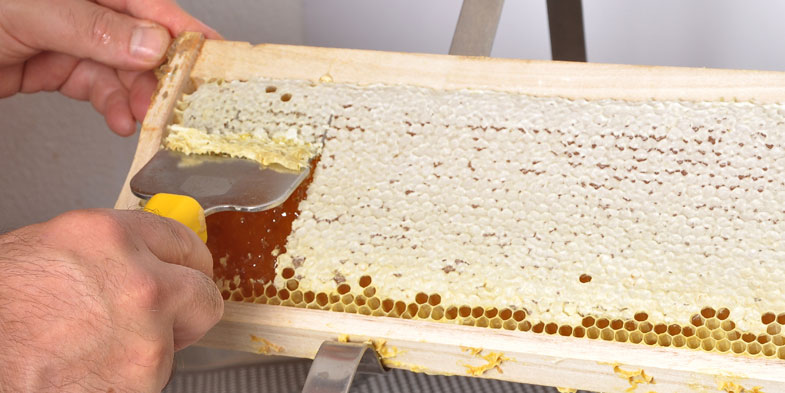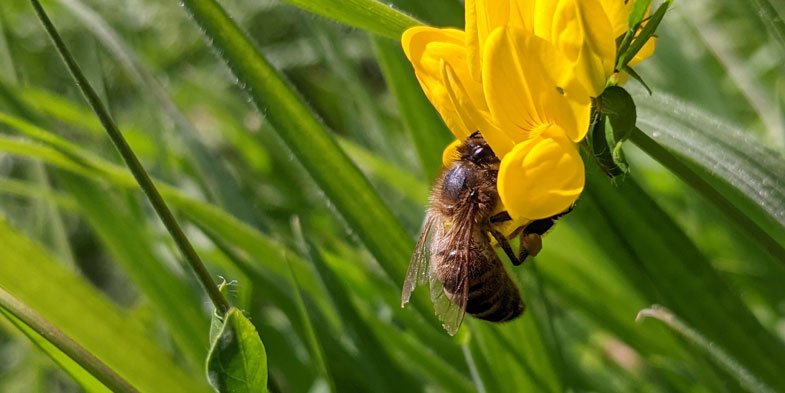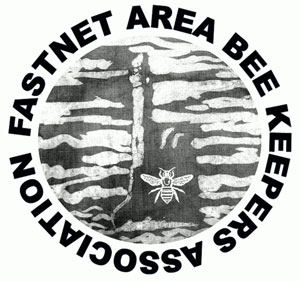Honeybees spend oodles of hours collecting for the hive. Their main requirements are pollen, nectar, water and propolis.
Foragers (worker bees) collect forage based on colony need indicated by internal worker bees that will only accept the most needed forage into the hive for the purposes of health, food, rearing young and productivity of the colony. If the colonies survive, the beekeeper and the bees have all done a good job well.
Hive Placement
When you are planning to start to keep bees take a good look at where you plan to place the hive facing south or nearly south and see what forage is near enough for your bees because you can’t change your mind and move them around at a whim! Bees can be moved under 3ft or over 3 miles, otherwise you lose them or unnecessarily stress them out. They depend on hive scent, location stability and memorise this orientation using topography, colour and relative sun position.
Try and understand where the sun is likely to be shining on the hive around 10am and place the hive front and facing just right of centre, by doing it this way your bees wake up and go out early to forage and the forage is likely to be dried out and will greatly increase their opportunities of bringing back the best of the best when plants and trees are blooming.
Pollen
Pollen is the stuff you will see the bees bringing back on their hind legs. It varies in colours depending on the source. Bees collect pollen from early spring to nurture the new emerging brood and to replenish stores from numerous flowers and trees, e.g., gorse, dandelion, blue crocus, snowdrops but to name a few. The importance of pollen to the colony is paramount for feeding young larvae and storing the surplus in cells for later on. See the rough guide to favoured pollen sources below.

Nectar
Nectar is the sweet liquid from plants and is carried home in the bees honey stomach and given to the house bees who deposit it in the cells for ripening into honey. Nectar sources can be similar to the pollen sources with some flowers and trees being favoured for nectar in what is called the flow (i.e., plentiful supply) where the bees get all they can and store it in the brood box first, and then in the top boxes called supers for the winter feed until the beekeeper comes along and takes it away, or more correctly exchanges it for syrup feed so they will survive during winter in semi-hibernation.

Water
Look out for a nearby constant water source or provide one near your hive site because the water carriers need to be able to get water home in the shortest time and avoid cooling down their little body, especially in the cold parts of the year. Bees can’t fly below 7ºc and carry water a long distance. Bees use water for temperature regulation and mixing with stored honey to make it viscous for feeding the queen and other bees plus young larvae and also for diluting stored honey for their winter feed.
Propolis
Propolis (plant resin) is collected from the bark and buds of trees in the warmest part of the day. It is used for a number of reasons, e.g., its qualities as a building material for sealing gaps in the hive and coating cells, plus embalming large predators like mice that they can’t push out of their home.
Nectar & Pollen Sources
Some sources of nectar and pollen include: snowdrops, gorse, blue crocus, white clover, rosebay willow herb, dandelion, garden flowers, chives, beans, comfrey, borage, fruit trees, hawthorn, sycamore, horse chestnut, willow, blackberry, fuchsia, ivy, heather, but to name but a few.

Many plants you call weeds are eating and drinking for the bees, so count these in when looking at placing your hives.
